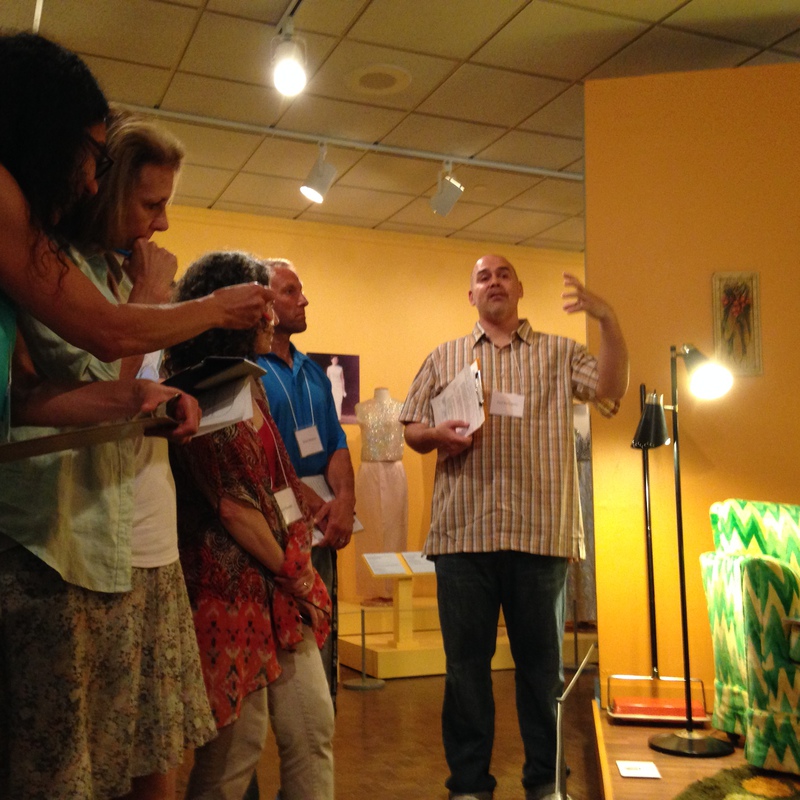
On Day 2 of the 2016 Summer Institute, (C3)2 grant administrators, teachers and teaching artists gathered for a day of exploration at the Long Island Museum in Stony Brook, NY. "Today, I'd like you to think about what learning in a structured space, such as a museum or a gallery, looks like," Laura Reeder, (C3)2 curriculum coordinator, told the group. This experience followed the Institute's Day 1, which focused on defining creativity and how to stimulate it through structured play (see PD Asks: What is Creativity?).
"Creative competency comes with knowing how to look at a space and break it down structurally, so you know where you're going - what should be learned and what might be learned," explained Ms. Reeder. "It also involves knowing what you and your students will bring to the space. And then, setting up the experience and let the students go to learn."

Working in the Museum's education studio, Ms. Reeder (above, standing) guided teachers in a curatorial decision-making activity. The teachers were assigned to one of three groups and told to create a "museum" space that either emphasized the content ("the stuff collected"), the context (the exhibit's big ideas), or the audience. "For example, here at the Long Island Museum, the content for one of their exhibit spaces is its carriages and the context is Long Island," noted Ms. Reeder.
To create a space focused on content, the first group displayed "artwork" beneath a brown paper canopy (below). Visitors could viewed the artwork as well as interactive with it by taking selfies or creating their own artwork.
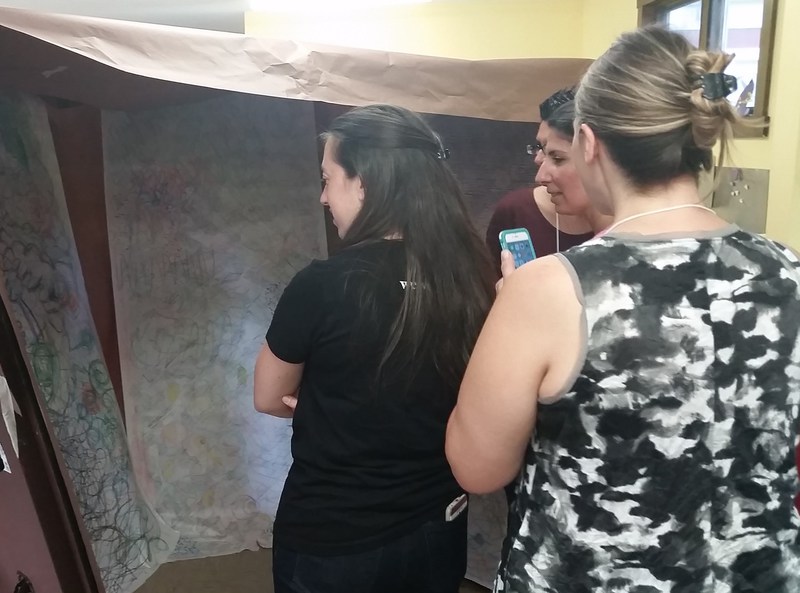
For the next space, which focused on context, the group chose re-using garbage as their big idea (below).

The third group involved the audience in their "museum" space by creating a sensory experience. Visitors interacted with five "sensational senses" stations (below).
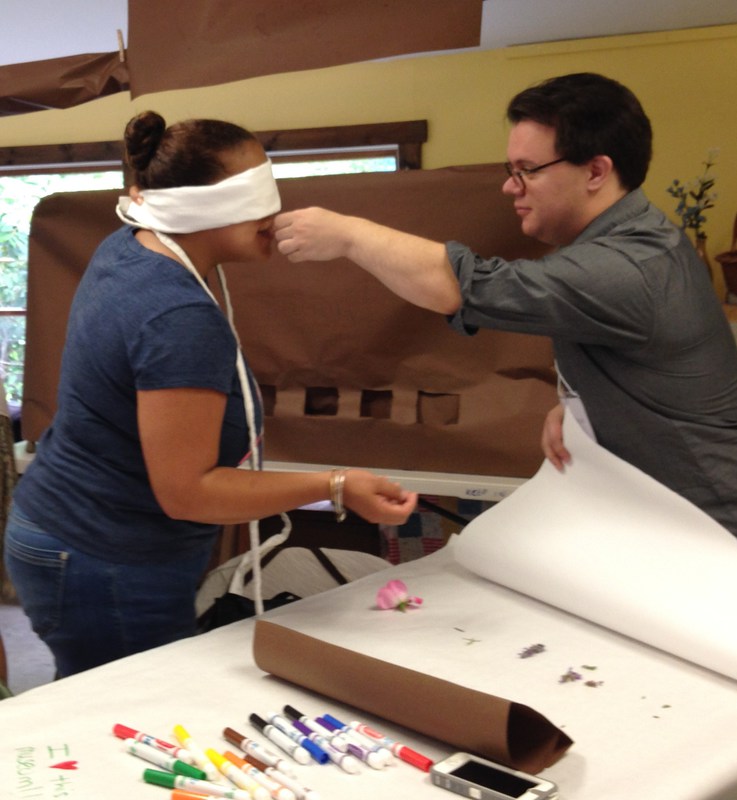
Afterwards, the group strolled over to the Museum's carriage exhibit, where 100 carriages are displayed in eight galleries. Lisa Unander, director of educator, (below, center) and her staff interacted with the teachers as they viewed the different galleries.
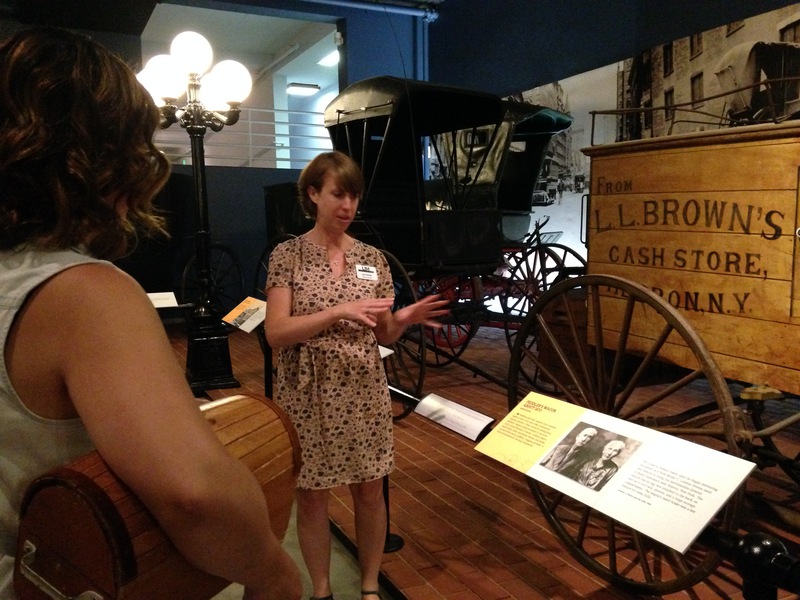
The teachers saw an opportunity to make connections with their Simple Machines curriculum in the "The Making Carriages" exhibit (below).
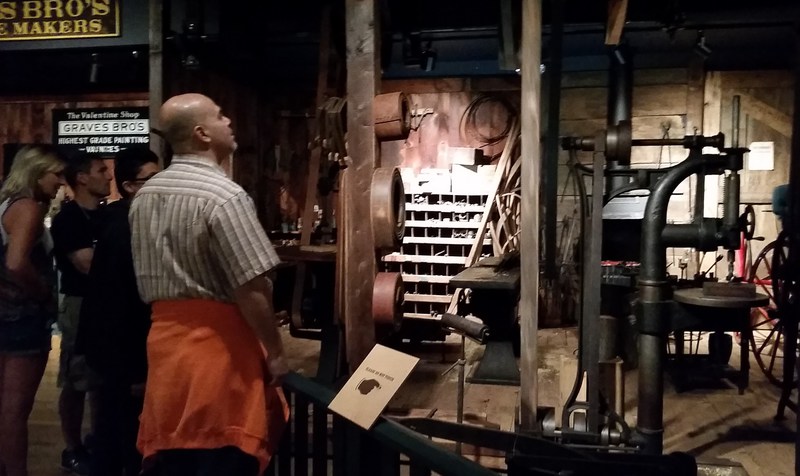
Next, teaching artists Danielle Marie Fusco and Lucienne Pereira engaged the teachers in movement and mathematic activities inspired by the carriage museum.

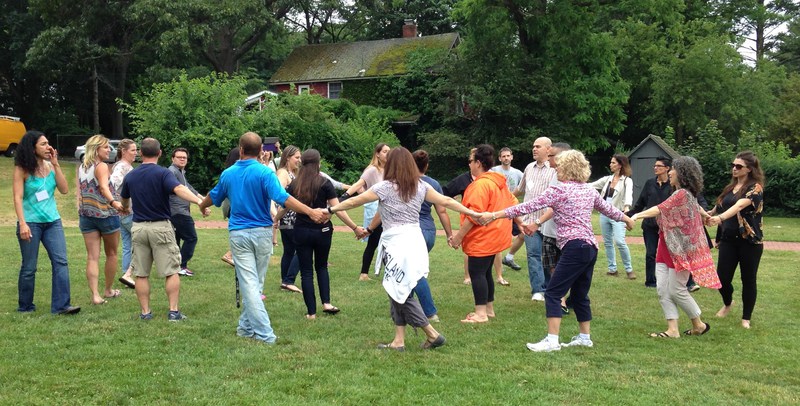
In the afternoon, the group visited "Long Island in the 60s," a brand new exhibit at the Long Island Museum. The exhibit looks at the turbulent decade and its impact on Long Island. Photographs and other memorabilia from the British Invasion in music, presidential campaigns, fashion, the Civil Rights Movement and more are on display. Teaching artist Paul Rodriguez (below, right) engaged the teachers in a cultural quest of the exhibit. Teachers were asked to choose something in the exhibit that resonated with them and to think how they might use it as a creative learning experience with students. Afterwards, the teachers shared their ideas.
As this was a brand new exhibit, the museum's educators used this opportunity to have the teachers become a focus group, sharing ideas to help them design the education program which will be available to schools until the end of December 2016 when the exhibit closes.
